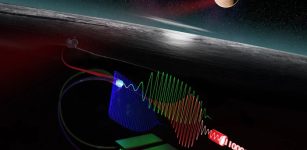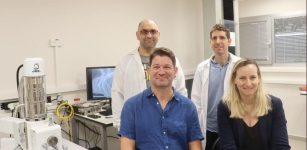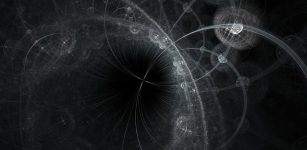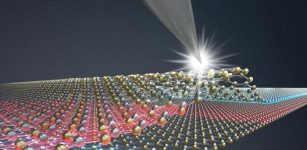3D Optical Memory Devices Using Fluorescent Materials Would Significantly Cut Global Electricity Consumption
Eddie Gonzales Jr. – MessageToEagle.com –There’s always room for another bright idea when it comes to safely storing the colossal amounts of electronic information we produce every day.
Researchers at Te Herenga Waka—Victoria University of Wellington are investigating whether fluorescence can be used to store three-dimensional (3D) data.
Credit: Public Domain
Initial findings show 3D optical memory devices using fluorescent materials would significantly cut global electricity consumption and provide longer-term data storage, potentially for centuries.
Research assistant Dr. Joe Schuyt in Te Wānanga Matū—School of Chemical and Physical Sciences has been leading a team researching how materials can be “doped” with elements that emit different-colored fluorescent light to represent the zeroes or ones that make up bytes for storing data.
He says there are exciting applications of luminescence and of extending the data storage medium from a single 2D plane, such as the surface of an optical disk, to storage throughout the volume of a material, say a luminescent crystal.
“Our aim is to develop 3D optical-memory devices where data are written and read using lasers and where the read-out is achieved via the detection of fluorescence.
“Traditional optical-memory devices, such as CDs, DVDs and Blu-ray disks, work using the reflection of light, which is a challenge to get to work in more than two dimensions.
“But fluorescence is far less challenging in that regard. Going from two to three dimensions will lead to a massive increase in storage capacity.”
Fluorescence is a form of luminescence in which an atom or material emits light almost as soon as it absorbs it. The emitted light usually has a longer wavelength, and hence a different color, to the absorbed light.
Data centers currently store information for individuals, companies, and governments on conventional hard drives with massive storage capacities but short lifetimes of about five years, says Dr. Schuyt.
“These centers are responsible for a huge chunk—more than 1 percent—of global electricity consumption and this is only going to increase as we generate more data.
“Our research aims to provide a means of long-term data storage with all-optical devices that can store data for centuries without losing any data and without using electronics.
“As a large fraction of stored data, such as records and archives, do not require frequent access, this technology would significantly reduce the power costs associated with long-term storage.”
Optical-memory devices do not need to operate as frequently or near-continuously as hard-disk drives (HDDs). Nor do they need to be cooled, says Dr. Schuyt.
“HDDs in data centers generate a lot of heat that requires active cooling. This is why big companies build data centers in very cold climates—to save on power costs.”
While studying the properties of various compounds, the research team found some luminescent ions with a positive electrical charge, called dopants, could change the fluorescent properties of a material.
“Take a material with a particular dopant that, when stimulated with light, emits light of a particular color (say yellow).
“If I want to write data to the material, I can selectively change the properties of the dopant, so that it then emits light of a different color (say red).
“So now I have some ions that emit yellow and others that emit red. These are the ‘zeroes’ and ‘ones’ that make up bytes I can use to store data; I just need to detect what color comes from where.”
Dr. Schuyt says that although one can’t predict the future and new technologies it is certain vast quantities of digital information will continue to be generated in years to come.
“A good thing about our technology is that, even if something bigger and better comes along, the data will still be secure for a long time and can be easily migrated to that new technology. Our technology would be perfectly suited to data that one wants to keep around for decades or centuries without having to think about it.”
Source: Victoria University of Wellington
Written by Eddie Gonzales Jr. MessageToEagle.com Staff











